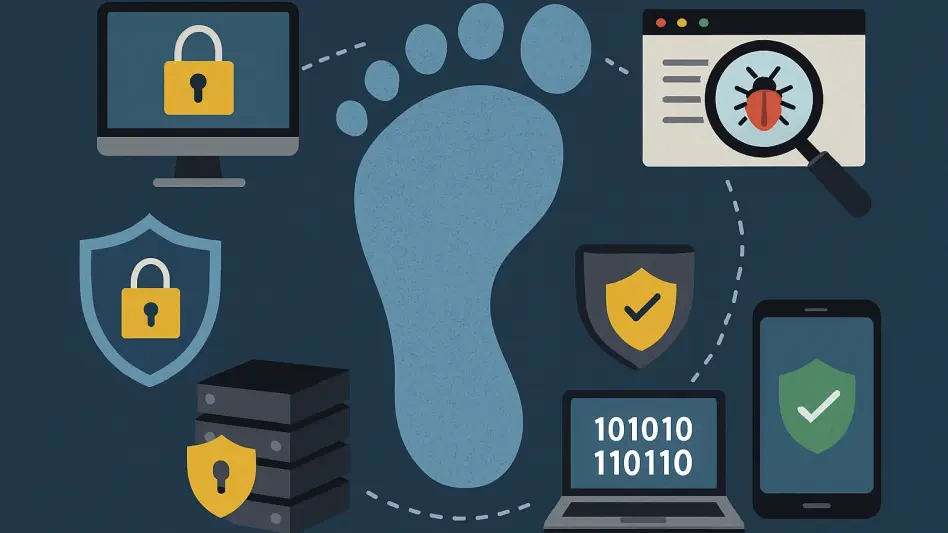As technological advancements continue to redefine industries, the insurance sector faces a growing threat at the intersection of opportunity and risk—cybersecurity. With the increasing sophistication of cybercriminals, the insurance industry finds itself under siege, tasked with safeguarding vast volumes of sensitive customer data. As insurers strive to adapt and defend against this rising tide of cyber threats, understanding the trends and implications becomes crucial. The following examination will delve into the roots of these cybersecurity challenges, their real-world impact, expert insights on the subject, and what the future might hold for insurers maintaining the trust and protection of their clients.
Understanding the Rise of Cybersecurity Threats in Insurance
The Growing Frequency and Severity of Cyber Attacks
Cyber incidents targeting the insurance industry have seen a notable increase, with both frequency and severity on the rise. Recent data indicates a significant upward trend in cyber attacks, highlighting the industry’s status as a lucrative target for malicious actors. Reports suggest that the number of attacks has surged year over year, emphasizing a stark reality for insurers worldwide. These trends reflect an alarming escalation in not just the quantity but also the complexity of such breaches, necessitating more robust defenses and adaptive strategies from the industry.
A growing body of evidence, supported by credible industry reports, underscores the gravity of this trend. As big data and digital innovation become central to insurance operations, the susceptibility to cyber intrusions grows accordingly. This evolution demands vigilance and proactive measures to protect not just the integrity of insurers’ systems but also the privacy and trust of their clientele.
Real-world Impact of Cyber Incidents on Insurance Companies
A poignant example of the impact of cyber incidents is seen in the challenges faced by Erie Insurance, a prominent home and auto insurer in the United States. The company recently grappled with a significant information security event, prompting a network outage that brought operations to a standstill. As Erie Insurance worked to contain the breach, concerns mounted about potential phishing attacks leveraging vulnerable channels to exploit sensitive customer information. This case illustrates how cyber threats can lead to operational, reputational, and financial consequences, severely affecting an insurer’s capacity to serve its policyholders.
In response to this breach, Erie Insurance implemented comprehensive measures to address the threat, collaborating with third-party cybersecurity experts to conduct a thorough forensic analysis of the incident. This response highlights the necessity for insurers to employ a multi-faceted strategy to bolster their defenses and mitigate risk in the face of evolving threats. The situation serves as a cautionary tale for the insurance sector, emphasizing the imperative for robust security infrastructures and responsive contingencies.
Expert Perspectives on Cybersecurity in the Insurance Sector
Insights from industry experts and cybersecurity thought leaders provide critical perspectives on the gravity of these challenges facing insurers. Experts emphasize the importance of adopting advanced technologies and hiring skilled personnel to better navigate the complexities of modern cyber threats. They highlight that as attackers become more cunning and methods more sophisticated, traditional security measures may no longer suffice, necessitating continuous innovation in defense strategies.
Beyond technological strategies, experts advocate for an organizational culture centered around cybersecurity awareness and resilience. They argue that fostering a culture where cybersecurity is ingrained in every facet of operations is imperative to preempt threats and effectively manage incidents when they occur. This involves training employees at every level to recognize potential vulnerabilities and respond swiftly and accurately if a breach is detected.
Future Outlook for Cybersecurity in Insurance
The outlook for cybersecurity in the insurance sector presents both opportunities and challenges as the industry adapts to this evolving threat landscape. Future developments may include greater collaboration across industries to share threat intelligence and best practices, enabling a collective defense against cyber adversaries. As businesses continue to digitize and innovate, the importance of cybersecurity will only deepen, reinforcing the need for insurers to remain vigilant and invest in cutting-edge solutions.
Looking ahead, the insurance sector can expect ongoing challenges as cybercriminals persist in their attempts to breach systems and steal valuable data. There will be increasing demand for sophisticated cybersecurity technologies and strategies, creating an environment poised for growth in these markets. While the situation poses risks, there is also potential for progress as the industry adopts more comprehensive approaches to protect against future threats and mitigate the consequences of inevitable breaches.
Conclusion
The evolving landscape of cybersecurity threats in the insurance industry underscores a critical component of modern risk management. The growing frequency and magnitude of attacks demand not just a strategic approach involving robust defenses, but also collaboration, innovation, and a steadfast commitment to data security. As Erie Insurance’s experience illustrates, insurers must be agile in their response strategies, ready to confront threats head-on and adapt to new challenges. Industry leaders are called to proactively embrace advancements in cybersecurity technologies and cultivate cultures centered around awareness and resilience. As the future unfolds, this commitment will play a pivotal role in ensuring the trust and safety of clients, poised against a backdrop of relentless cyber threats.








